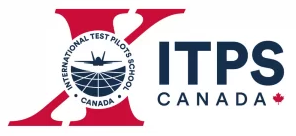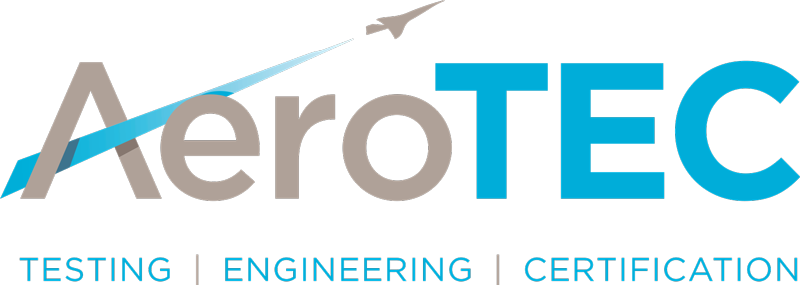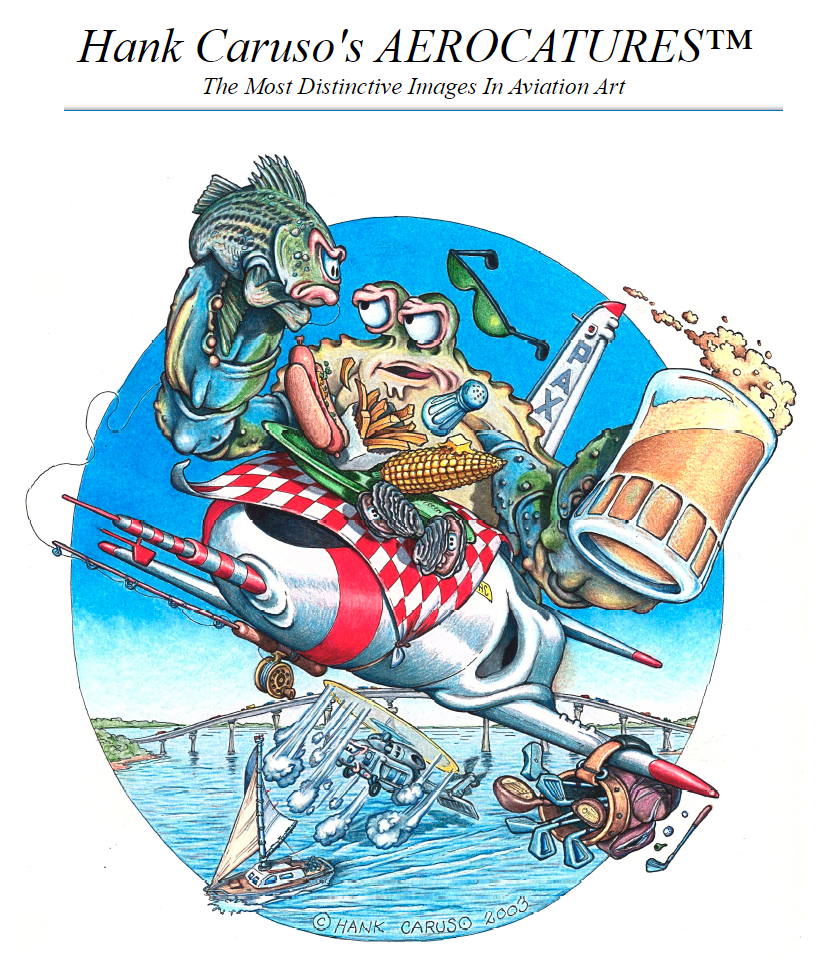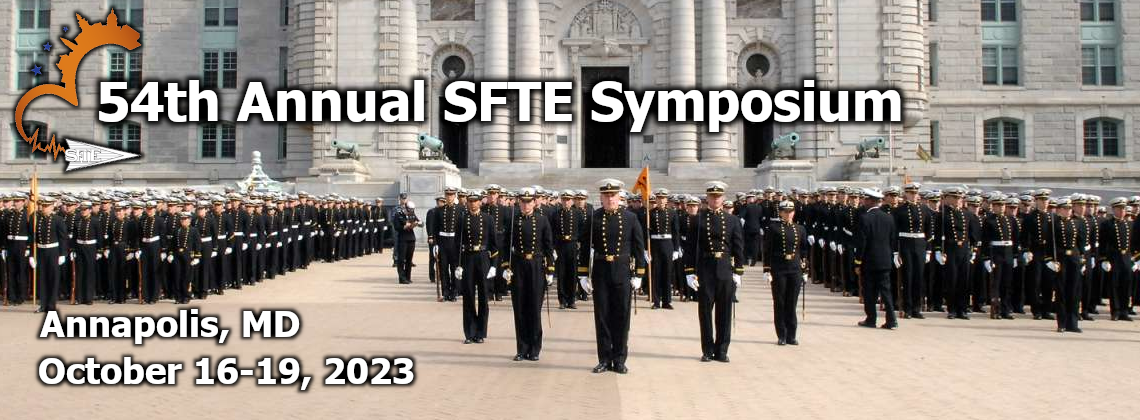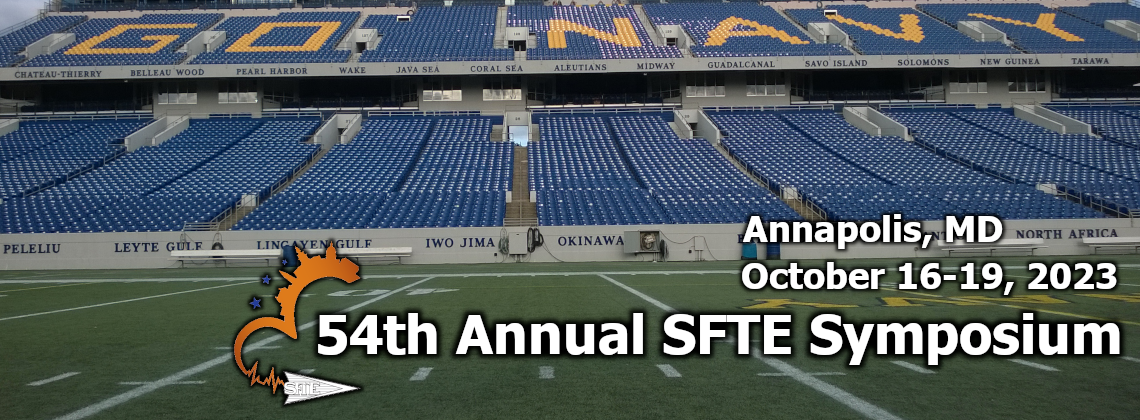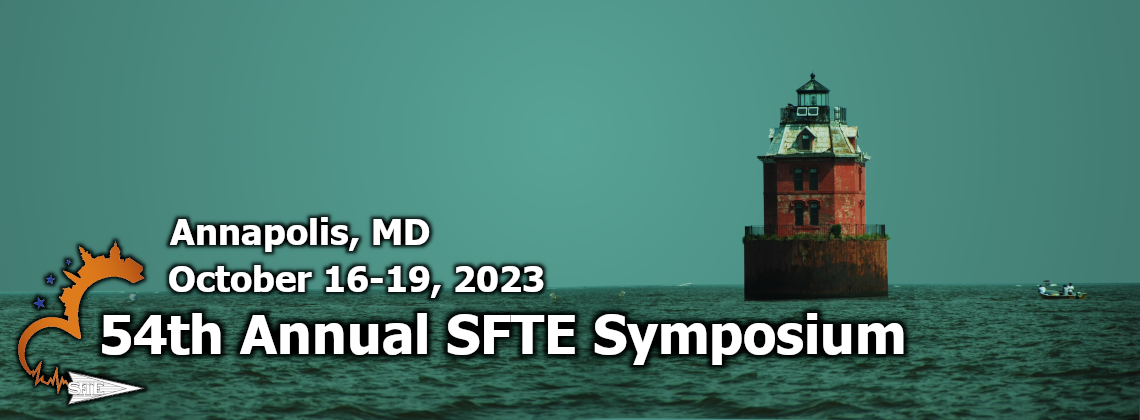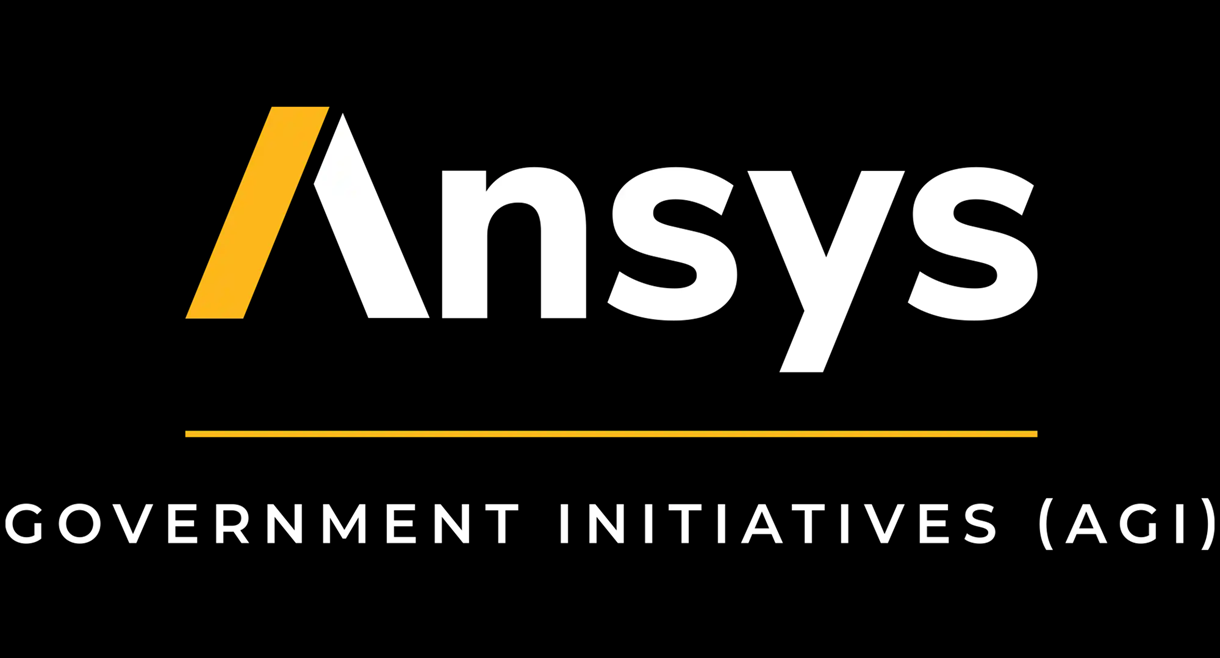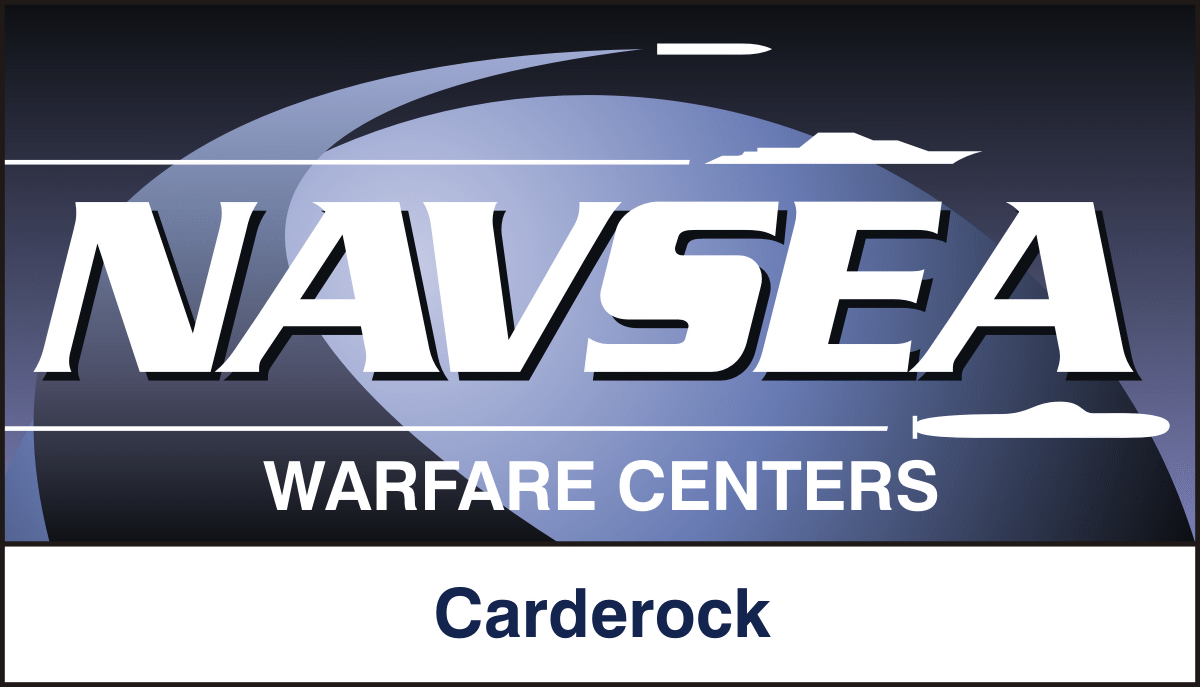2023 - Patuxent River
Invited Speakers
- Eric Fallabel - Deputy Director, Naval Test Wing Atlantic (NTWL)
- Steve Cricci - Executive Director, Naval Air Warfare Center Aircraft Division (NAWC-AD)
- Captain J.J. "Yank" Cummings (Ret.) - CO of CVN-78 and Navy Technical Advisor for Top Gun: Maverick
Discussion Panel
Address to the Society
Symposium Sponsors and Exhibitors
Technical Session Agenda
Day 1 - October 17
Session 1.1: The Leading Edge of Autonomy
- Agent has the Aircraft - Lessons Learned during X-62A Autonomy Flight Test
- How to Test Highly Complex or even 'AI' Algorithms within the Aerospace Area
- Safety Implications of Autonomous Vehicles – STPA Applied to a Neural Network Controlled Aircraft*
Session 1.2: Faster, Longer, Higher
- Supersonic Testing of the Bombardier Global 8000
- Written in the Stars - How Fuel Systems Flight Test Grabbed People's Attention
- Connecting Hearts, Minds, and Data Testing a Space Infrastructure for the 21st Century
Session 2.1: A New View on Un-crewed
- US Naval Academy's Autonomous Drone Integration with a Yard Patrol Vessel
- S Naval Academy's Research Supporting Autonomous Aerial Refueling
- MQ-8C Image-Based Navigation for Shipboard Landings
Session 2.2: Going Electric!
Day 2 - October 18
Session 3.1: Aircraft Systems Test
- Dynamic Non-Linear Displays - Principles and Practice*
- Things Flight Testers Should Know About Hydrogen Handling in an Aviation Environment
- Cabin Pressurization Control Issues on the Honeywell B757 Flying Test Bed
Session 3.2: Things Hanging Off Aircraft
- To Keep or Drop? - Developmental Testing of the CH53K AutoJettison
- Hang in there! - V-22 Fast Rope Testing
- Reduced Hover Power Margin Testing in the V-22 and Integrating Test Directors into Aircrew Decision Making
Session 4.1: Improving on the Fundamentals
- Real-Time Pilot Inputs for Aircraft Dynamic Modeling
- Parameter Identification of the L-39 Aircraft
- Separating Fact from Friction - Removing Pilot Opinion from Handling Qualities Flight Test*
Session 4.2: Tools for Testing, Analysis, and Investigation
Day 3 - October 19
Session 5.1: Loads of Flutter
- Cessna SkyCourier Flight Test Flutter - An Aeroelastic Stability Journey
- The New Era of Loads Flight Testing - AI in Real Time Envelope Expansion Testing
- Flight Testing for Flutter Operational Design and Lessons Learned from FLEXOP & FLiPASED
Session 5.2: Innovation Through Re-Evaluation
- Using an Old Tool in a New Way - Adapting Handling Qualities Stress Testing on a Transport Airplane**
- How Can We Do This Differently? - Saving Time During Test Execution by ReEvaluating Test Methodologies
- Engine-Out Glide Performance from Sawtooth Descent Testing of a Beechcraft Bonanza
Session 6: Panel Discussion
* Best Paper of the Session
** Best Paper of the Symposium
Thank you to our friends of the Symposium
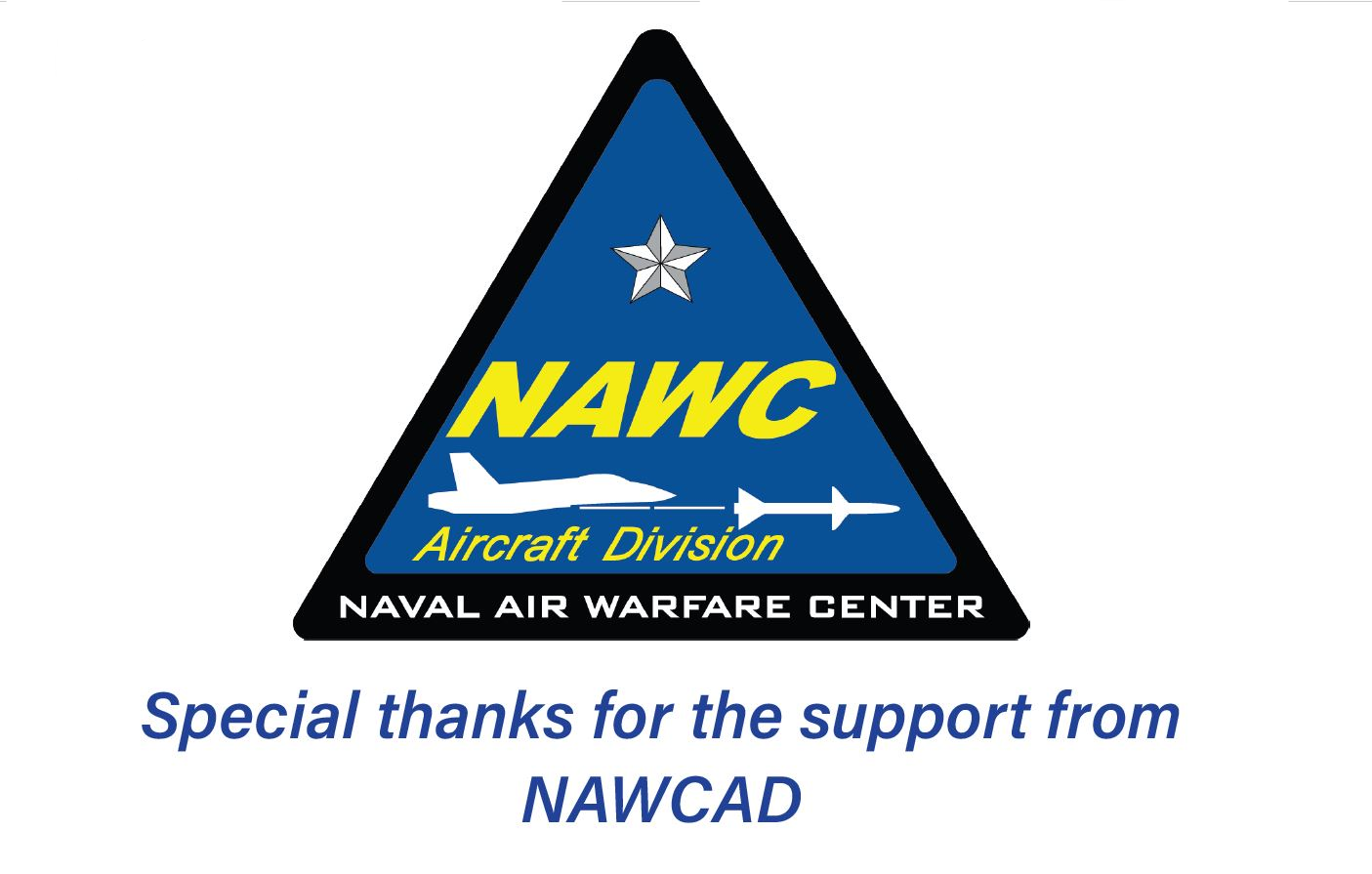
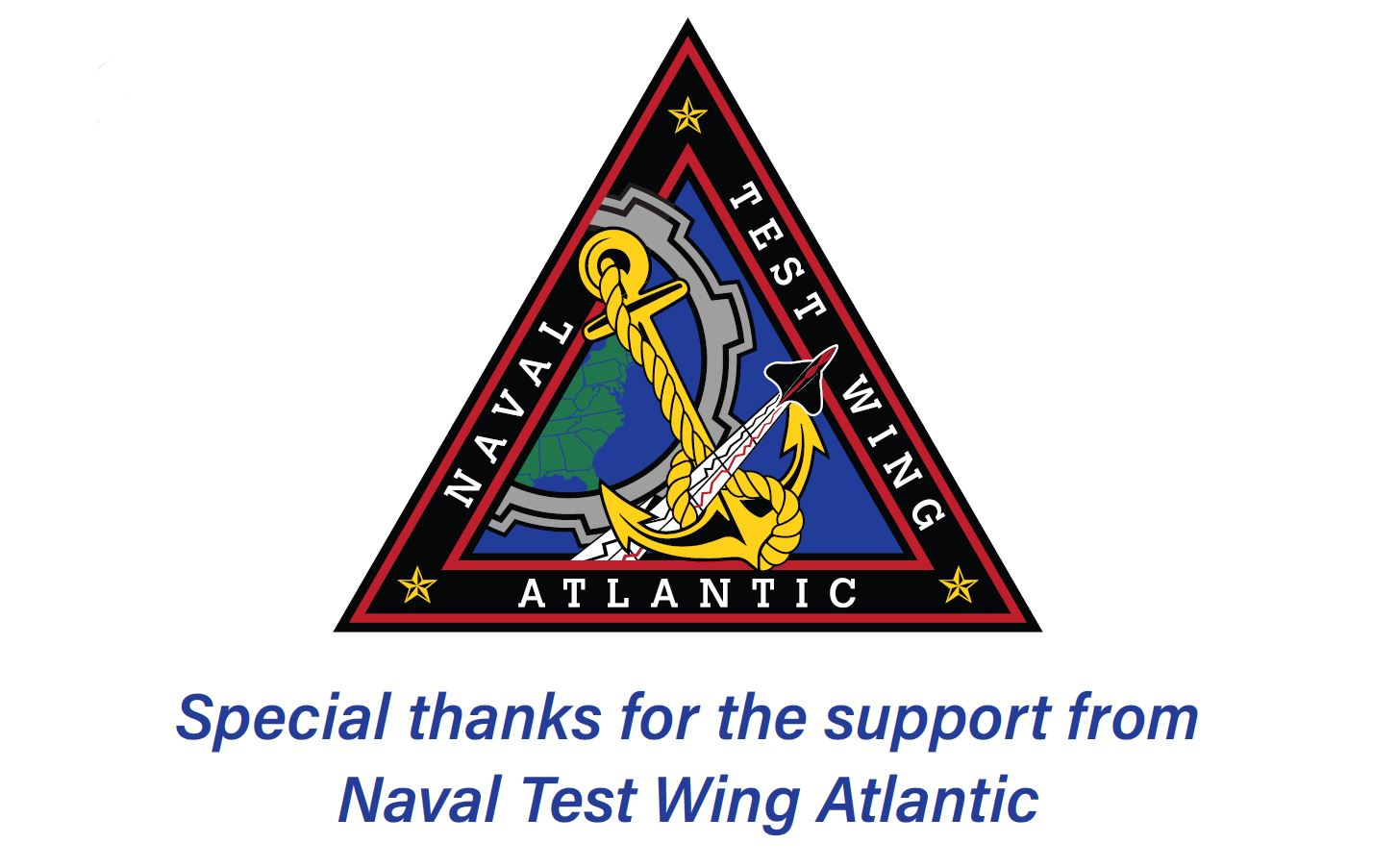
Our Welcome Invited Guest Speakers
Eric Fallabel
Deputy Director, Naval Test Wing Atlantic
United States Navy
The People and Purpose of NTWL
Mr. Fallabel serves as the Deputy Director of Naval Test Wing Atlantic (NTWL), a Major Command within Naval Air Warfare Center – Aircraft Division. NTWL is composed of approximately 4000 civilian, military, and contractor personnel who conduct developmental flight test for the US Navy and Marine Corps.
During his Tuesday morning Keynote address to open the Symposium, Mr. Fallabel welcomed everyone to the symposium, discussed the Mission, Organization, and People of NTWL and highlighted some of the unique flight test at NAS Patuxent River. He tied in various themes planned for the Symposium to the importance of SFTE, it's mission, and the importance of our Symposiums to sharing lessons learned.
Mr. Fallabell closed with emphasizing NTWL and NAVAIR's commitment to supporting SFTE, kicking off the week with a great start and focus on the excitement in flight test.
Steve Crichi
Executive Director, Naval Air Warfare Center - Aircraft Division
United States Navy
From TOPGUN Maverick to JSE, What We Love About Our Work
Mr. Cricchi is the Executive Director of the Naval Air Warfare Center - Aircraft Division (NAWCAD) and tasked with ensuring resources are administered properly and the mission is executed effectively, safely and efficiently. He is the senior civilian leader of the United States Navy’s largest warfare center with sites across the United States. Mr. Cricchi is a long-time member of SFTE and career flight tester.
Mr. Cricchi addressed the Symposium at lunch on Wednesday where he showed a short documentary demonstrating the Naval Air Warfare Center’s contribution to the flying and filming of TOPGUN Maverick and spotlighted new advances in simulation with NAWCAD's Joint Simulation Environment. He discussed many aspects of testing unique to the US Navy, including the excitement and challenges of developing so many different types of aircraft, and how our shared love of the work keeps us engaged.
Mr. Cricchi's stories and career in flight testing provided an fascinating overview of what makes our hearts flutter... and lesson learned, it's not budgets.
JJ "Yank" Cummings
Captain, United States Navy (Retired)
Captain of the USS Gerald R. Ford (CVN-78), and Technical Advisor for TOPGUN Maverick
"Show Them You Care" - Insights into Leadership
CAPT J.J. Cummings (USN Ret) is a die-hard New England sports fan who grew up in Sharon, Massachusetts before leaving to join the US Navy where "Yank" was an F-14 Instructor Pilot and a graduate of the Navy Fighter Weapons School (TOPGUN).
After transitioning to the FA-18F Super Hornet, he served as the Commanding Officer of Strike Fighter Squadron 11, the Red Rippers. He was the Executive Officer of the aircraft carrier USS NIMITZ (CVN 68), Commanding Officer of the amphibious transport/assault ship USS ANCHORAGE (LPD 23), and Commanding Officer of the Navy’s newest aircraft carrier and most technologically advanced vessel, the Mighty Warship USS GERALD R. FORD (CVN 78). His final tour was as the Chief of Staff for U.S. Second Fleet and the first technical advisor for the filming of TOPGUN Maverick.
CAPT Cummings brought forth several leadership examples that intertwines with the Symposium flight test themes. He discussed episodes from his early career, how they shaped him and drove him, and the importance of "Show Them You Care". He talked about the more interesting and sometimes controversial aspects of command, interacting with Hollywood on TOPGUN Maverick, and of being a Naval Aviator.
Yank's Banquet Keynote presentation was a wicked smart exclamation point to a blockbuster week of flight test stories, camraderie, and lessons learned.
Technical Presentations
Agent has the Aircraft Lessons Learned during X62A Autonomy Flight Test
The X-62A is the newest autonomy test bed aircraft which enabled the first tactical AI flight tests. This testing built up from the first aircraft control by an AI system to simulated aerial dogfights within a single flight then repeated this process with multiple AI systems over the course of 12 flights. The objectives of this testing were focused on demonstrating dynamic control of a high-performance jet, but valuable lessons were learned on how to test autonomy safely and efficiently. This paper presents lessons learned by X-62A test team to build up the complexity of AI flight test quickly and safely and how the team enabled in-flight autonomy updates which condensed fly, fix, fly mantra to an overnight timeline.
How to Test Highly Complex or even 'AI' Algorithms within the Aerospace Area
More and more AI (Artificial Intelligence) algorithm are developed in the field of military and partly in the civil aeronautical area and often used with operation of UAS (Unmanned Aircraft Systems). Between 2017 and 2022 Airbus Defence and Space performed several Flight Test campaigns to test and demonstrate technologies and developments with Manned-Unmanned-Teaming (MUM-T) together with cooperating partners and suppliers.
This paper discusses the experience of how to test high complex algorithm. Therefore, one function (out of several others), the Distributed Sensor Oriented Flying (DSOF) were taken as an example to illustrate the challenges of flight testing such complex algorithms and the problems arising with it. DSOF is a function for fast localization of emitter with several Unmanned Air Vehicles (UAV) so called Remote Carriers (RC).
Ryan Bowers
United States Air Force
Dr. John Thomas
MIT
Best of Session Award Winner
Safety Implications of Autonomous Vehicles – STPA Applied to a Neural NetworkControlled Aircraft
This paper investigates the safety implications of flight testing an Uncrewed Air Vehicle (UAV) controlled by a neural network-based flight autonomy software, and the utility of System Theoretic Process Analysis (STPA) in identifying risks. The host UAV in this case study includes various control regimes and handoffs over the course of a sortie including human control, traditional autopilot, and an artificial intelligence autonomy software trained using Deep Reinforcement Learning (DRL) machine learning techniques.
The flight test operational environment includes flight in both civil and restricted airspace, and at least one nearby crewed chase aircraft to observe the UAV in flight. STPA was applied after traditional airworthiness and safety assessment processes but before flight test to identify and mitigate potential new hazards associated with the UAV technology and its operation. STPA was found to identify new risks, vulnerabilities, and undocumented assumptions that were used to create practical improvements in the technology, operational planning, and flight test. STPA produced additional mitigations related to the UAV, the automated run-time assurance mechanisms, human controls and other interactions with the UAV, and the overall operation of the autonomy.
Supersonic Testing of the Bombardier Global 8000
In May 2022 Bombardier announced the Global 8000, a product enhancement to the Global 7500 (which entered service on 2018). Along with enhancements to range, cabin altitude and interior designs, a key feature of the Global 8000 is an increase in the maximum operating Mach (MMO). The original certification of the Global 7500 was to an MMO of M0.925. As a part of this certification, dive demonstrations were completed out to M0.995. Increasing the MMO further therefore necessitated conduct of dive testing to Mach numbers in excess of M1.0. Prior to this point Bombardier had not conducted any supersonic testing on any platform, so it was decided to conduct envelope expansion prior to program announcement.
In May of 2021 a team deployed from Bombardier Flight Test Center (BFTC) Wichita to Santa Maria, California. Over the course of just under a week envelope expansion testing was conducted successfully over the Pacific, supported by a NASA chase aircraft. Data from this testing provided confidence to allow the public announcement of the Global 8000 approximately 12 months later.
Written in the Stars How Fuel Systems Flight Test Grabbed People's Attention
The Airbus A321XLR took flight in 2022, the latest development for a product with more than 30 years of heritage. Promising new standards in customer comfort and making hitherto uneconomic routes viable, the aircraft is equipped with a brand-new fuel system architecture as well as modifications to many other components including the flight controls, the flaps, the landing gear and cabin-related systems.
An early target of the test campaign was to illustrate the good functioning of the fuel system over a maximum duration flight, the A321XLR being capable of flying for 13 hours or more. This paper will explain the efforts of an enterprising flight test crew to make such a long flight interesting for the general public whilst at the same time meeting the testing objectives set by the design office.
Connecting Hearts, Minds, and Data Testing a Space Infrastructure for the 21st Century
In the past decade, the space industry has been modernizing to make space operations more automated and more efficient than ever before. As this multi-year modernization effort progresses, the US Space Force (USSF) faces the exceptional technical challenge of integrating modern cloud-based hardware and software with decades-old legacy Space systems. The Command and Control (C2) layer is the critical, often-overlooked segment that enables operators to manage all the tasks that space vehicles perform every second of every day. USSF will rely on a cadre of space testers from the USAF Test Pilot School’s Space Test Course (STC) to ensure the integrity and validity of each test event. Guardians must define smart boundaries and objectives to verify and validate effective C2 of our space systems. This paper discusses specific test challenges associated with the development of an experimental cloud-based ground system, the unique approaches required to tackle those challenges, and possible next steps for the US Space Force and the space industry writ large.
US Naval Academy's Autonomous Drone Integration with a Yard Patrol Vessel Research
The United States Naval Academy (USNA) operates a fleet of 108-foot yard patrol craft (YP). The primary mission of these vessels is to introduce and train Midshipmen on seamanship and navigation. In 2009 the Office of Naval Research, in conjunction with the Naval Air Warfare Center Aircraft Division partnered with researchers at the USNA to build a movable flight deck on one of the YPs. This flight deck-modified YP has offered a low-cost platform that can be used by various naval research efforts to integrate new technologies into a maritime asset without the need to tie up a fleet asset. This paper highlights current flight-test and research projects currently being executed on the flight deck modified YP.
MIDN Dillon Miller
CDR Donald "Bucket" Costello
United States Naval Academy
No Paper Submitted
US Naval Academy's Research Supporting Autonomous Aerial Refueling
The United States Navy has publicly announced that they intend to field an Air Wing with an increasing number of un-crewed aircraft. However, the current plan does not contain aircraft with the ability to aerial refuel (as the receiver). The Office of Naval Research approved a FY24 new start Future Naval Capability (FNC) to set the standard for how an un-crewed system will autonomously aerial refuel. This presentation will detail the FNC to include the Run Time Assurance Frameowrk, overview of the architecture, and the implementation of a machine learning algorithm to assure the system will function properly. In particular, this presentation will focus on the work being performed at the US Naval Academy to assure an "AI" can complete this task with an an acceptable level of risk.
MQ-8C Image Based Navigation for Shipboard Landings
From August 2022 to January 2023, Air Test and Evaluation Squadron Two Four (UX-24), the U.S. Navy’s UAS test squadron, conducted ground and flight tests of the Image-Based Navigation for Shipboard Landing (INAV-SL) system on the MQ-8C Fire Scout UAS. The three-camera INAV-SL system was designed to optically detect standard flight deck markings and calculate relative position and orientation of the MQ-8C. The INAV-SL system was configured to collect data for comparison to the current landing system. No commands were input into the air vehicle’s control feedback loop. A variety of approaches were conducted to fixed flight deck markings on an airfield taxiway and to the USS Jackson, an Independence class Littoral Combat Ship based out of San Diego, CA. The system demonstrated the ability to optically acquire and track the flight deck during approach and landing phases of flight with typical error of less than 2 ft.
Things Flight Testers Should Know About Electric Engines
As a follow on to the white paper Things Flight Testers Should Know About Batteries, this paper explores some of the unique challenges of testing aircraft powered by electric powertrains. Aircraft, installation, and system level topics are discussed, and critical interface considerations are included. Additionally, system integrity, performance determination, and safety-in-use considerations are detailed. An introduction to recommended instrumentation and control systems is provided. Onboard and remotely piloted architectures are considered, as well. Overall, this paper reinforces that the legacy foundations of flight testing are solid, and details how to build upon time proven approaches to safely assess novel propulsion technologies.
The Story of Alice: The Path to First Flight
On September 27th, 2022, Eviation’s Alice aircraft made history by becoming the first all-electric, twin-engine, commercial aircraft to successfully take flight. This paper will provide an overview of the systematic preparations that were undertaken to achieve this historic milestone, including the tests performed, risk mitigations, and specific challenges that were addressed. High level lessons learned will also be discussed, which are particularly applicable to any startups performing flight testing.
Ground Control Station Crew Reduction Techniques for a Remotely Piloted eVTOL Aircraft
This paper covers the techniques used to reduce the required crew in the ground control station for testing a remotely piloted eVTOL aircraft during early developmental flight testing. Within six months, the crew required to operate the aircraft was reduced from 16 to 7 members (56% reduction) with minimal impact on crew workload and test safety. This effort required an engagement with various engineering teams to define specific containment criteria, assess and simplify existing ground control station screens for critical parameter monitoring, define automated threshold triggers and automation of routine tasks involved with data upload and data analysis. This paper outlines a blueprint that can be utilized by both eVTOL and UAV companies that are focused on reducing the crew required to execute flight testing, especially during early developmental flight testing of remotely piloted aircraft.
Dynamic Non-Linear Displays - Principles and Practice
Dynamic Non-Linear Displays (DNLD) were developed to reconcile the mutually conflicting demands affecting EFIS and HUD tape displays for dynamic legibility, wide scale range, and adequate precision. For example, traditional tape altimeters typically limit their analog displayed range to 300 ft in order to maintain the necessary 20 ft resolution.
TRL-7 flight evaluations have shown that DNLD satisfies all three display requirements, while maintaining full scale linearity in the fine-control region. DNLD displays exhibited no discontinuities, remained legible at extreme aircraft rates, and never went out of range (so DNLD altimeters, for example, always kept the underlying terrain elevation in view). Finally, DNLD constantly presented the entire range of feasible values (such as all 360 of a compass) for each displayed parameter. Because of these characteristics, and unlike conventional displays, DNLD can contribute to all three levels of Situational Awareness identified by Endsley: perception, comprehension, and prediction of the displayed parameter.
DNLD has been successfully trialed by Canada’s National Research Council, and is ready for additional flight and simulator testing to further evaluate and refine the DNLD concept. Potential applications for DNLD include HUDs and Electronic Standby Instrument Systems.
Things Flight Testers Should Know About Hydrogen Handling in an Aviation Environment
Hydrogen powertrains are an area of significant interest in aviation and other industries today. All types of systems ranging from direct combustion to hybrid electric powertrains with fuel cells are under development. While the use of hydrogen in aircraft is not new, it is not commonplace and there are specific design and operational issues that are unique to hydrogen fueled systems. The focus of this paper is the development, design, and testing of systems using hydrogen and specifically the areas that are of primary concern to test teams. This paper will discuss the safety approaches recommended and the design implications that flow from typical recommended safety analyses. Hydrogen risks, design mitigations to risks, leak detection approaches and test specific considerations will be discussed.Cabin Pressurization Control Issues on the Honeywell B757 Flying Test Bed
The Honeywell B757 Flying Test Bed (FTB) SN: 22194, Registration: N757HW has been in service for over 40 years. For the last 18 years the aircraft has been operated by Honeywell as a Flying Test Bed and product demonstrator. At times throughout its long service a condition existed that would cause both cabin pressurization controllers to fail. While frustrating at times the issue proved to be an exciting challenge to identify and come up with a solution. This report documents issues observed with the cabin pressurization control system, the steps taken to pinpoint the cause of the issue, failed attempts to resolve the issue, and the eventual solution.
Jeff Werly
David Baver
United States Navy
Maj Kevin Target Fleischer
US Marine Corps
To Keep or Drop? - Developmental Testing of the CH-53K Auto Jettison System
Over the life of the CH-53E, the Auto-Release cargo hook system has caused multiple inadvertent jettisons of single-point and dual-point loads, with fleet aircrew regularly disabling this capability to avoid losing single-point external loads. To improve upon the CH-53E design, the CH-53K cargo hook system has an Auto-Jettison system designed to release loads inflight only when the load is predicted to cause airframe damage. Developmental testing of the CH-53K Auto-Jettison system was performed during initial external load envelope expansion to evaluate the aircraft response for both retention and jettison scenarios with various external load weights to clear this capability for fleet use. The following lessons learned were identified: re-evaluate the plan after each event, be as explicit as possible in defining test equipment, review the aircraft design against each planned test event, and mitigate both the successful and failed outcomes of your test event.
Hang in there! - V-22 Fast Rope Testing
During 2023 testing of the 60 ft weighted fast rope with the V-22, a test hazard was realized when a roper was caught on the rope and suspended 20 ft in the air, unable to free himself. The team swiftly executed the appropriate emergency procedure, and the roper was safely lowered to the ground. The test team performed a thorough analysis of the incident to identify contributing factors and developed additional risk mitigation strategies that resulted in successful completion of all remaining test points without further incident. This paper and presentation will review the hung roper event; cover the lessons learned from test planning, execution, and post hazard review; and provide preventative measures that may be used in future, or similar, testing.
Andrew "Stubbs" Bankston
Bell
Mike Remaly
Boeing
LCDR Gavin Kurey
United States Navy
Reduced Hover Power Margin Testing in the V-22 and Integrating Test Directors into Aircrew Decision Making
The V-22 has continued to expand the envelope in both hand-flown and automated flight at high density altitudes and reduced hover power margins. During the summer of 2021at high elevation in the Rocky Mountains, the V-22 Integrated Test Team tested flight control software designed to expand aircraft capabilities beyond the current altitude and power margin limitations. This effort intended to tune automation improvements in the flight control system that were already vetted at sea level and to explore the limits of acceptable flying qualities while at the upper limit of the approved landing altitude for the V-22.
To mitigate the hazards of flight at low power margin in a mountainous environment, a water ballast system was installed to allow the aircrew to jettison the water ballast to restore excess power if power required exceeded power available or if in extremis. Telemetry monitoring of the testing by the team’s flight test engineers was also required due to real time changes to the flight control system and operating on the extreme edges of hover performance. The dynamic nature of this testing uncovered a gap in communication and coordination between aircrew and the test director with respect to experiencing unexpected results and jettisoning water. Addressing this gap served to further mitigate hazards to this test and other tests where this gap has gone unrecognized.
Real-Time Pilot Inputs for Aircraft Dynamic Modeling
Real-time dynamic modeling and pilot displays are used to enable pilots to intuitively discover effective multi-axis inputs for aircraft dynamic modeling during flight tests. An F-16 nonlinear simulation flown by a pilot using a joystick and a laptop computer with real-time displays of relevant information is used to demonstrate the approach. Results show that pilots can use the real-time display to discover and implement effective and efficient multi-axis inputs for accurate dynamic modeling in flight.
The real-time dynamic modeling results driving the pilot display can be used to certify that the acquired flight data are adequate for accurate dynamic modeling, thus avoiding post-flight data analysis and modeling by an analyst to make that determination. Implications for pilot training and efficient flight testing are discussed.
Parameter Identification of the L-39 Aircraft
ITPS Canada is developing a variable stability aircraft based on the Aero Vodochody L-39 platform for use as a teaching aid for Test Pilot and Flight Test Engineer students. An aerodynamic model of the aircraft was developed for use in control law development. To produce this model 13 flights were conducted with an instrumented L-39 and time domain maximum likelihood estimate techniques were used to generate 42 parameters describing the aircraft across the flight envelope tested.
This presentation will describe the flight test planning and execution, as well as the estimation of the aerodynamic derivatives. Special attention will be given to the practical challenges experienced during the parameter identification campaign and lessons learned.
Separating Fact from Friction - Removing Pilot Opinion from Handling Qualities Flight Test
Handling qualities flight testing is often a source of friction within the test community. Because a key component of handling qualities testing is pilot opinion, allowances must be made for differences in piloting techniques, sometimes euphemistically referred to as pilot gain, as well as background, experience, and other variables. A fixed-base simulation study was conducted with 12 test pilots flying three Mission Task Elements in a helicopter model. Data obtained included measures of pilot opinion, task performance, and physiological parameters.
Artificial Neural Network models were developed that used performance and physiological data to predict pilot opinion. For Handling Qualities Ratings, the models were accurate for 159 of 162 evaluations. This method holds promise to assist qualitative testing with quantitative predictions, greatly reducing the size of future handling qualities test plans, and using facts to decrease friction between competing members of the test team.
Dynamic Interface Virtual Environment A CMV-22 Critical Azimuth Virtual Evaluation
The Dynamic Interface Virtual Environment (DIVE) program is a research effort aimed at augmenting the current process of creating launch and recovery envelopes for Dynamic Interface testing, and thus deliver fleet envelopes more safely and quickly with greater capability. DIVEs overall goal is to increase simulator fidelity/simulator capabilities to better reproduce aircraft characteristics and better reflect interactions between aircraft and surrounding infrastructure or other aircraft within the simulation.
In an attempt to produce an accurate baseline of the DIVE simulation capability, direct comparison between live simulations and flight test data are crucial for the program’s accreditation. With the new CMV-22 aircraft arriving in the V-22 community, critical azimuth flight testing was completed at multiple azimuth and wind speeds in Texas in 2021. This was thought to be the perfect dataset for initial comparison between virtual and live simulation. The objective of this testing was to replicate flight test data captured in live simulation with similar atmospherics (pressure, temperature, density) and flight tolerances of aircraft parameters (altitude, airspeed, and nacelle setting). For this evaluation, multiple pilots and different control laws were used to determine the level of precision between the virtually simulated aircraft states/pilot inputs as compared with the flight tested values.
During testing, Cooper-Harper Handling Qualities Ratings (HQRs) were taken, in addition to the quantitative data, for the capture/hold of target airspeed. In total, 98 runs were completed with both quantitative and qualitative data compared successfully.
Application of Causal Analysis based on System Theory (CAST) to Flight Test Mishap Investigation
CAST (Causal Analysis based on System Theory) is a modern systems engineering approach to investigating mishaps and incidents that looks for the reasons why the systems, procedures, and training implemented to prevent unwanted events were unsuccessful. To evaluate the usefulness of CAST for flight test mishap investigations, the 1984 crash of a B-1A bomber during a test mission was chosen as a case study.
The CAST view of error starts from the assumption that all behavior (system or human) is affected by the context in which it occurs, resulting in unsafe control actions. CAST treats safety as a control problem, not a failure problem. Using CAST, the causal factors for the B-1A mishap were determined. However the CAST analysis did not provide unique insights unobtainable without the use of CAST. Possibly this specific case may not have particularly benefited from the capabilities of CAST. The philosophy underlying CAST may be more important than the specific techniques. CAST did provide a systematic and standardized way of structuring the analysis that was beneficial. Based on this case study, CAST should be an option for the investigation of future flight test incidents and mishaps.
Johnston A. Coil
LinQuest Corporation
Maj Steven T. Wachtel
United States Air Force
Model Based Test Engineering Incorporating Test into Digital Engineering Transformation
As more programs adopt digital engineering transformation, test engineers must take advantage of the opportunities this change presents. Utilizing Model Based Systems Engineering (MBSE) principles and applying them to test engineering enables the test program to access authoritative structural, behavioral, and requirements data on the System Under Test (SUT) and take advantage of the MBSE principles of simplifying complexity, relationships between model elements, and model element re-use. This paper presents a Model Based Test Engineering (MBTE) metamodel that federates with SUT models; provides improved linkages between requirements, test procedures, safety, and test resources; improves test program insights through automated reporting; and is applicable for testing of physical systems, hardware in the loop, digital twins, or hybrid testing. Application and lessons learned are provided from case studies of reverse-engineering document-based test plans and from the execution of a MBTE pilot project at the 780th Test Squadron, Eglin AFB, FL.
Cessna SkyCourier Flight Test Flutter An Aeroelastic Stability Journey
This paper outlines the development, from an aeroelastic perspective, of the Cessna Model 408 SkyCourier envelope expansion journey. Described are the analytical studies and ground testing leading to high confidence in the planning and execution of a safe and productive flight flutter test program.
The SkyCourier is the first high-performance strut-braced Textron Aviation aircraft in forty years; thus, strut location, having a powerful influence on flutter margins, was a focus of early design trade studies, as was the interaction of strut dynamics with wing and engine nacelle dynamics. Given long experience with jet-powered aircraft, the higher ambient vibration levels of the engine/propeller units provided interesting challenges in flight test data capture. Whirl-mode flutter analysis and testing were necessary requirements.
Finally, the comparatively high-drag aircraft configuration, as compared with that of high speed jets, was a concern in descent planning for flight-flutter testing. In sum, the SkyCourier, in spite of its tried and true configuration, was full of great lessons for the Textron Aviation team. A structured, safety-focused program starting from the conceptual design phase led to a successful and uneventful high speed test campaign.
The New Era of Loads Flight Testing AI in Real Time Envelope Expansion Testing
Flight test has an inherent risk and cost. Typically, at the start of a loads flight test program, initial finite element model (FEM) based aircraft external loads predictions are provided to the test team. However, due to cost and schedule constraints, this initial model is not correlated with flight test data until the completion of the program and thus no updated predictions are provided to the test team.
To improve flight test, the 773rd structures team developed the Rapid Prediction Generator (RPG). Using Artificial Intelligence (AI) via a multiple linear regression with interactions algorithm, the team utilizes flight test data to generate an empirical external loads model of the aircraft.
Once the model is integrated into the control room, it can be updated near real-time with flight loads data to increase the accuracy of these load predictions as flight test is executed. This reduces the probability of an overload, reduces unnecessary build-up test points, and increases test efficiency, which in aggregate, can save millions of dollars during the life of a test program.
Flight Testing for Flutter Operational Design and Lessons Learned from FLEXOP & FLiPASED
One of the goals of the projects FLEXOP (Flutter Free Flight Envelope Expansion for Economical Performance Improvement) and FLIPASED (Flight Phase Adaptive Aero-Servo-Elastic Aircraft Design Methods) was to test an active flutter suppression system in-flight with the help of subscale flight demonstrators T-FLEX and P-FLEX. The 65kg take-off weight, 7m wingspan swept wing unmanned aircraft were designed and built, and the concept of operations was created from scratch. The current article describes the operational developments during the second half of the project. It also looks into the most notable flights, providing lessons learned.
Nathaniel Rutland
Kevin Prosser
Gulfstream
Best of Symposium Award Winner
Best of Session Award Winner
Using an Old Tool in a New Way Adapting Handling Qualities Stress Testing on a Transport Airplane
Handling Qualities Stress Testing in various forms has been utilized to ferret out deficiencies in fighter type aircraft for decades. A host of techniques have been developed and promulgated throughout the years with varying success. One common complaint is the limited applicability/suitability of these tests to transport category aircraft. A deep dive into the details of how one specific HQ Stress Test, the CARBZC technique, was successfully used to identify HQ deficiencies in a transport category aircraft will be evaluated and discussed.
During takeoff performance testing on a new Part 25 design, with fly-by-wire control laws, the converging of test-specific closed-loop tracking, atmospheric instabilities, and a control law mode transition led to the discovery of a HQ deficiency. This unique confluence of events proved impossible to reproduce with existing off-line analysis tools. Without a way of reproducing the event, a new method was needed to confidently identify the control system features contributing to the deficiencies and validate any proposed solutions. Various HQ stress tests were used, and then
modified, to find a repeatable means of triggering the unique event, enabling the team to develop the solution with off-line tools and piloted lab testing. Further, a new technique, the Single-Cycle HQ Stress Test, was developed so the event could be safely reproduced in-flight to fully validate the proposed solution.
How Can We Do This Differently? Saving Time During Test Execution by ReEvaluating Test Methodologies
Just because we’ve done it one way in the past, doesn’t mean we should do it that way every time. We put this statement into action during Triton high-speed taxi testing at NAS Patuxent River in the summer months of 2021. The MQ-4C Triton, like many aircraft, has limitations to ground operations in hot weather conditions due to the aircraft avionics compartments’ temperatures increasing rapidly in high Outside Air Temperatures (OAT). These limitations are further realized during high-speed taxi testing because every high-speed taxi run requires a brake cool-down pause following the test point. The past high-speed taxi tests executed at Naval Air Station (NAS) Patuxent River used the established, ultra conservative, brake cool-down time from production checkout which included waiting on the taxiway up to 40 minutes between test points. However, during test planning, the test team identified that if the OAT was greater than approximately 80F the conservative brake cool-down pauses would result in a single test event to be stretched to multiple days due to aircraft overheating.
The Triton test team was therefore challenged to ask ourselves, ‘How can we do this differently?’. Reevaluating the time for brakes to cool down between high speed taxi runs enabled the test team to shorten the cooling pauses and complete the entire test profile within the operational runtime of the aircraft on a day greater than 80F. This set a new precedent in how MQ-4C taxi tests are conducted both for the United States Navy (USN) and at the Northrop Grumman Corporation (NGC) production facility. This brief will discuss how to think critically about where our safety
requirements come from and how to analyze and correlate data from past test events to confidently make test execution safety recommendations.
Providing updated test methodology to support safe and efficient test execution is what makes our hearts flutter.
Innovation in Engine Out Glide Performance from Sawtooth Descent Testing of a Beechcraft Bonanza
The author is a faculty member in the Aerospace Department at Middle Tennessee State University, which has one of the largest university flight training programs in the Country. While serving as a contracted flight test engineer/expert witness for a lawsuit involving an aircraft accident, the author designed and conducted a standard sawtooth descent flight test to ascertain the power-off glide performance of the accident airplane.
As a matter of course, the author incorporates flight testing into in-class examples and as an actual in-flight exercise into a senior level course for pilots and engineers, AERO 4440 Aircraft Performance. Experiences gained during the lawsuit’s flight testing were also incorporated into the course. Further calculations were made for the lawsuit to include characterizations of gliding turns to multiple landing destinations for the purpose of identifying the airplane’s possible/optimal landing location(s). This work prompted further research that went beyond the lawsuit’s needs. The author was able to determine optimum bank angles for use in gliding turns to destinations at different bearings from the aircraft’s heading.
This information is being prepared for dissemination to Professional Pilot students at MTSU and to the broader pilot community through articles and presentations.
Panel Discussion - The Excitement of Flight Test!
Carla Jackon hosts a panel discussion on the future of flight testing featuring Jim Fawcett, Jen Uchida, Pete Donath, and Dave Roberts.
State of the Society
SFTE President Jen Uchida and SFTE Secratary Ben Povall present the 2023 State of the Society.
SFTE 2023 Awards Banquet
The Awards Presentation for the 2023 SFTE Symposium.
- Symposium Best Paper and Best of Session Paper Awards
- SFTE Scholarships Winners
- Director's Award
- James S. McDonnell Award
- Kelly Johnson Award
- Induction of Society Fellows

